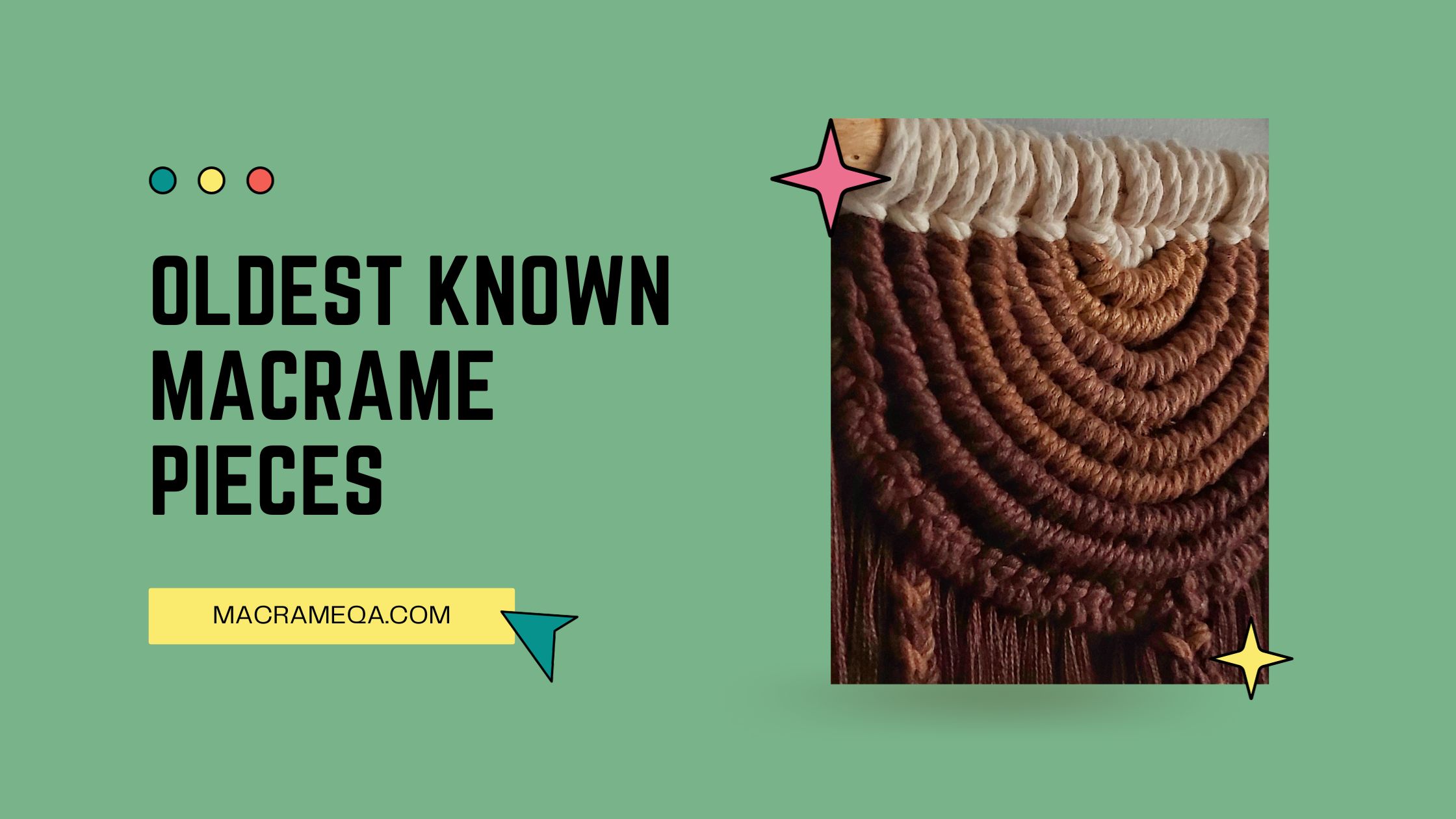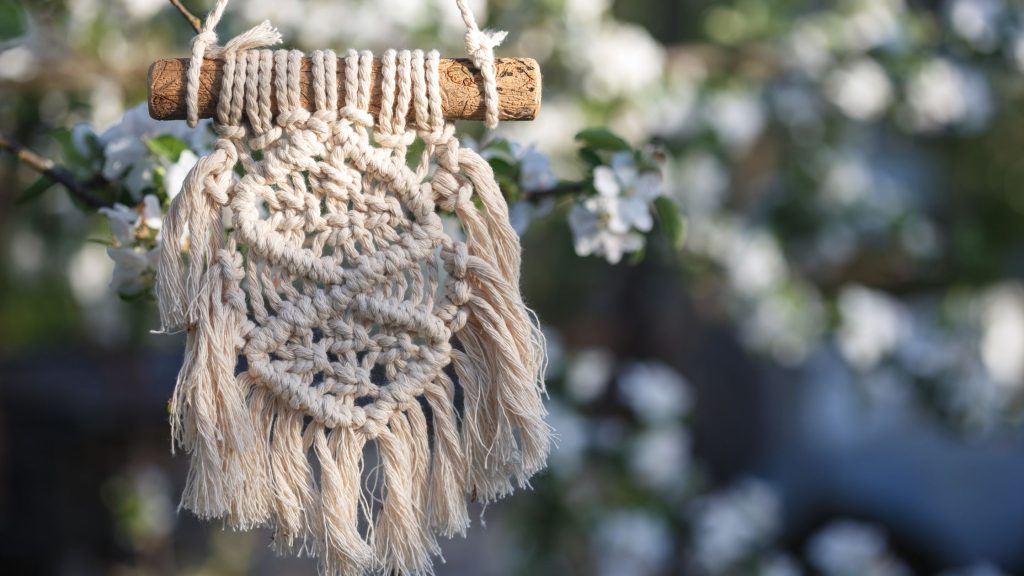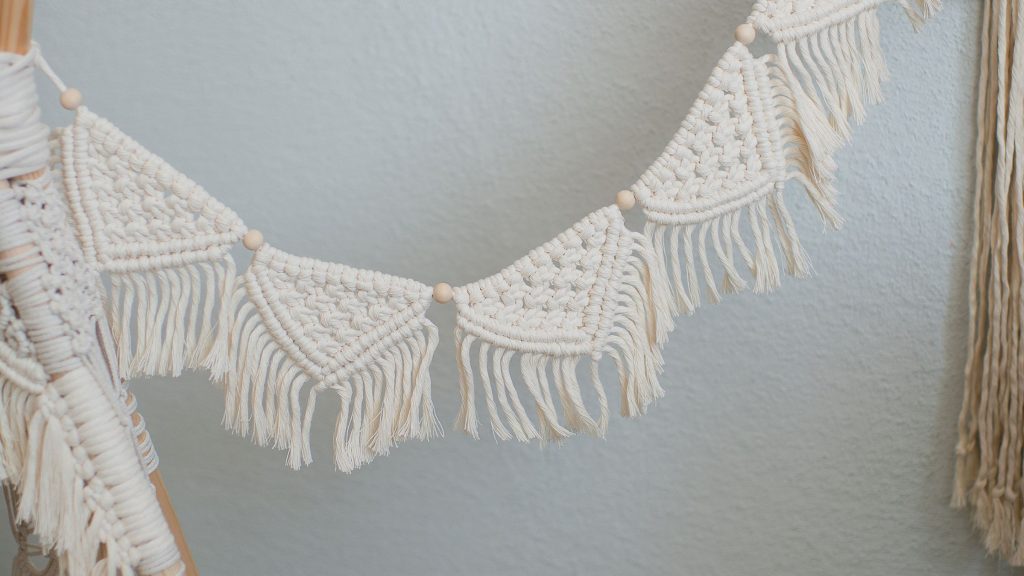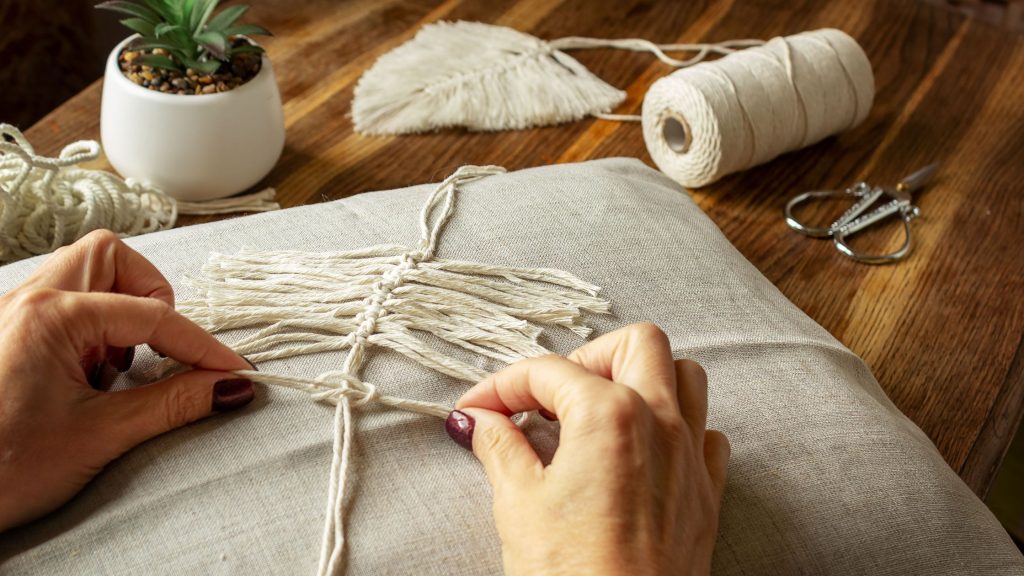Macrame, the ancient art of knotting cords together to create intricate patterns, has a rich history that stretches back centuries. In this article, we explore the fascinating world of macrame and uncover the origins of its oldest known pieces. From ancient civilizations to modern-day enthusiasts, these extraordinary creations not only showcase the craftsmanship of their makers but also provide a captivating glimpse into the intertwining of cultures throughout time. Join us as we unravel the stories behind these remarkable macrame marvels and discover the beauty that lies within their intricate knots.
Prehistoric Origins
Macrame is an ancient art form that dates back to prehistoric times. While the exact origins of macrame are difficult to determine, archaeological evidence suggests that the technique has been practiced for thousands of years. It is believed that early humans in various parts of the world used knotting techniques to create functional and decorative items.
Archaeological evidence
Archaeological discoveries have shed light on the early practice of knotting and suggest that macrame was prevalent in many ancient civilizations. In some parts of the world, fragments of knotted textiles have been found dating back as far as 1300 BCE. These fragments provide valuable insight into the skill and creativity of our ancestors.
Early examples of knotting techniques
Early examples of knotting techniques can be seen in various cultures throughout history. In ancient China, for example, knotting was a prominent part of their artistic tradition. Chinese knotting techniques involved intricate designs and were often used to create decorative items or as symbols of good luck and prosperity.
Development of macrame
The term “macrame” is believed to have originated from the Arabic word “migramah,” which means fringe. The art of macrame gradually spread across various regions and civilizations, each contributing its own unique styles and techniques. Over time, macrame evolved from a basic method of knotting to a refined art form, with intricate patterns and designs becoming more prominent.
Ancient Egypt
Ancient Egypt holds a significant place in the history of macrame. The Egyptians were skilled in the art of knotting and used it extensively in their textiles and jewelry.
Egyptian knotting traditions
Egyptian knotting traditions were highly sophisticated, with intricate designs and patterns. The Egyptians used macrame to create garments, such as belts and headdresses, and also in the production of decorative items like wall hangings and tapestries. The knots used in Egyptian macrame were often symbolic in nature, representing various aspects of their culture and beliefs.
Macrame in textiles and jewelry
In ancient Egypt, macrame was not only limited to textile production but was also widely used in jewelry-making. Intricate macrame techniques were employed to create necklaces, bracelets, and other adornments. These pieces often featured vibrant colors and intricate patterns, showcasing the Egyptians’ mastery of macrame.
Historical significance
The use of macrame in ancient Egypt holds historical significance as it reflects the cultural and artistic achievements of the time. The intricate knotting techniques and designs developed by the Egyptians laid the foundation for the further development of macrame in subsequent civilizations.
Middle Ages and Renaissance
During the Middle Ages and Renaissance period, macrame continued to evolve and spread throughout Europe.
Macrame in Europe
Macrame gained popularity in Europe during these periods, especially in countries like Spain and Italy. European artisans incorporated their own unique styles and techniques into the art form, giving rise to a wide variety of macrame designs and patterns. Macrame was used in the production of clothing, household items, and ecclesiastical decorations.
Influence of Arabic knotting techniques
The influence of Arabic knotting techniques can be seen in European macrame during this time. The trade routes established during the Middle Ages brought new ideas and techniques from the Arab world, enriching the existing macrame traditions. The incorporation of Arabic knotting techniques gave European macrame a distinctive aesthetic and complexity.
Religious and decorative uses
During the Middle Ages and Renaissance, macrame was often used for religious and decorative purposes. Intricately knotted textiles were used as altar cloths, vestments, and religious decorations in churches and cathedrals. Macrame was also used in the creation of decorative elements for homes, such as wall hangings, curtains, and tablecloths.
17th and 18th Centuries
The 17th and 18th centuries marked a period of growing popularity for macrame, with the art form gaining widespread recognition and becoming increasingly fashionable.
The growing popularity of macrame
Macrame gained popularity among the upper classes in Europe during the 17th and 18th centuries. It became a fashionable skill, and women of high social status would often practice macrame as a domestic pastime. The art form was valued for its intricacy and the ability to create elaborate designs.
Macrame in fashion and home decor
Macrame was extensively used in fashion and home decor during this era. Elaborate macrame trims were sewn onto clothing, adding a touch of elegance and sophistication. In-home decor, macrame was used to create intricate curtains, bedspreads, and upholstery, enhancing the aesthetic appeal of interiors.
Macrame schools and guilds
The growing popularity of macrame led to the establishment of schools and guilds dedicated to teaching and promoting the craft. These institutions played a vital role in transmitting knowledge and preserving the techniques of macrame. They provided a platform for artisans and enthusiasts to exchange ideas and further develop their skills.
Victorian Era
The Victorian era brought about a resurgence in the popularity of macrame, with the art form becoming synonymous with wealth and status.
Macrame in the Victorian household
Macrame became a central feature in Victorian households, adorning every aspect of interior decor. Delicate macrame lace curtains, doilies, and tablecloths were meticulously crafted and used to elevate the elegance and opulence of Victorian homes. Macrame plant hangers and elaborate wall hangings were also commonly found, adding a touch of artistic flair to living spaces.
Macrame as a symbol of wealth and status
In the Victorian era, macrame became a symbol of wealth and social status. The intricacy and labor-intensive nature of macrame meant that only those who could afford to invest time or resources in the craft could indulge in its beauty. Macrame creations became prized possessions, displayed prominently as a sign of affluence.
Elaborate Victorian macrame designs
Victorian macrame designs were characterized by their intricacy and attention to detail. Elaborate patterns, delicate fringes, and complex structures were prominent features of Victorian macrame. The use of various materials, such as silk, satin, and velvet, added to the grandeur of these designs.
Arts and Crafts Movement
The Arts and Crafts Movement of the late 19th and early 20th centuries played a pivotal role in the revival of macrame as an art form.
Incorporation of macrame into the arts
The Arts and Crafts Movement emphasized the importance of handmade crafts and traditional techniques. Macrame, with its rich history and intricate knotting methods, fit perfectly into this ethos. Macrame was incorporated into various art forms, such as textile design, embroidery, and sculpture, allowing artists to explore and experiment with its potential.
Macrame revival during the movement
During the Arts and Crafts Movement, there was a renewed interest in macrame, with artists and craftsmen reviving and reinterpreting traditional techniques. Macrame designs became more refined, with a focus on natural materials, simplicity, and functionality. The movement brought macrame back into the spotlight and paved the way for its future popularity.
Influence on modern macrame
The Arts and Crafts Movement had a lasting influence on modern macrame. The emphasis on craftsmanship, attention to detail, and appreciation for traditional techniques are still evident in contemporary macrame creations. The movement also encouraged the exploration of macrame in new contexts, such as fiber arts and mixed media, contributing to its continued evolution.
Macrame in the Americas
Macrame has a rich history in the Americas, with indigenous cultures and the influence of European colonization shaping its development.
Indigenous macrame traditions
Indigenous cultures in the Americas have their own macrame traditions that stretch back for centuries. Native American tribes, such as the Navajo, Apache, and Pueblo, used macrame techniques to create textiles, bags, and ceremonial pieces. The skill and artistry of these traditions continue to be preserved and celebrated today.
Macrame in Native American cultures
Macrame played a significant role in Native American cultures, both as a practical craft and as a form of art. The knotting techniques used by Native American artisans were passed down through generations, with each tribe adding their unique style and symbolism to their macrame creations. Macrame was used to create clothing, jewelry, and items of cultural significance.
Colonial influence on macrame
The arrival of European colonizers in the Americas introduced new materials and techniques to indigenous macrame traditions. The trade networks established between Europe and the Americas allowed for the exchange of ideas and materials, resulting in the fusion of traditional indigenous knotting techniques with European influences. This cross-cultural exchange shaped the development of macrame in the Americas.
20th Century Revival
The 20th century saw a revival of macrame, particularly during the bohemian and hippie movements, resulting in its widespread popularity as a craft.
Macrame in the Bohemian and hippie movements
During the bohemian and hippie movements of the 1960s and 1970s, macrame experienced a resurgence in popularity. The free-spirited and creative nature of these movements aligned well with the craft of macrame, making it a popular choice among the counterculture. Macrame plant hangers, wall hangings, and accessories became symbols of the bohemian lifestyle.
Macrame is a popular craft
Macrame gained popularity as a craft during the 20th century, with many people embracing it as a creative outlet. Craft enthusiasts and hobbyists found joy in learning and practicing macrame, creating a wide variety of items such as jewelry, handbags, and home decor. Macrame patterns and tutorials became widely available, allowing individuals to explore the art form at their own pace.
Macrame in contemporary art
In addition to its popularity as a craft, macrame also found its way into contemporary art. Artists began using macrame techniques in their fiber art installations and sculptures, pushing the boundaries of traditional macrame and incorporating it into the realm of fine art. The versatility of macrame allowed for experimentation and innovation, resulting in unique and thought-provoking pieces.
Macrame Today
Macrame continues to thrive in the modern era, with artists and designers pushing the boundaries of the craft and finding new applications in interior design and fashion.
Modern macrame artists and designers
There is a vibrant community of modern macrame artists and designers who are pushing the boundaries of the craft. These individuals explore innovative techniques, materials, and styles, creating unique and contemporary macrame pieces. Their work is often showcased in galleries, exhibitions, and online platforms, creating a renewed interest in macrame.
Macrame in interior design and fashion
Macrame has become a popular choice in interior design and fashion, adding a touch of bohemian and contemporary charm to spaces and wardrobes. Macrame wall hangings, plant hangers, and light fixtures create visual interest and texture in homes, while macrame accessories and clothing are embraced for their uniqueness and handmade appeal.
Innovation and experimentation in macrame
Contemporary macrame artists and designers are continuously innovating and experimenting with the craft. They explore new materials, techniques, and dimensions to defy traditional limitations and create truly remarkable macrame pieces. Some artists incorporate elements such as beads, feathers, or natural objects, while others explore unconventional forms and structures, pushing the boundaries of what macrame can be.
Conclusion
The oldest known macrame pieces provide us with valuable insights into the rich history and cultural significance of this ancient art form. The practice of macrame has evolved over thousands of years, spanning continents and civilizations. From its prehistoric origins to its enduring popularity in the modern era, macrame has always captured the imagination of artists, crafters, and enthusiasts alike.
Macrame continues to be relevant today, cherished for its intricate beauty and versatility. The fusion of traditional techniques with contemporary design aesthetics ensures that macrame remains a beloved craft and an integral part of artistic expression. As we continue to explore and experiment with macrame, it is essential to remember and preserve the heritage and cultural significance it holds. Macrame’s enduring legacy reminds us of the creativity and craftsmanship of our ancestors, and it will undoubtedly inspire generations to come.
















